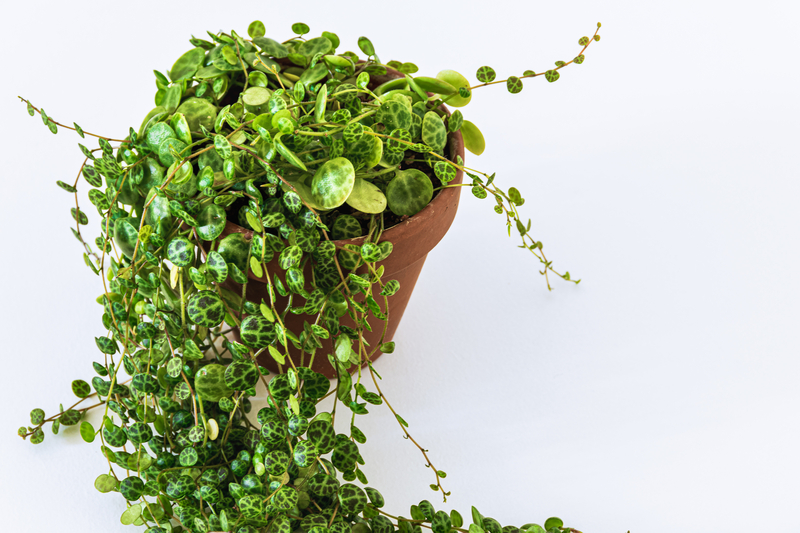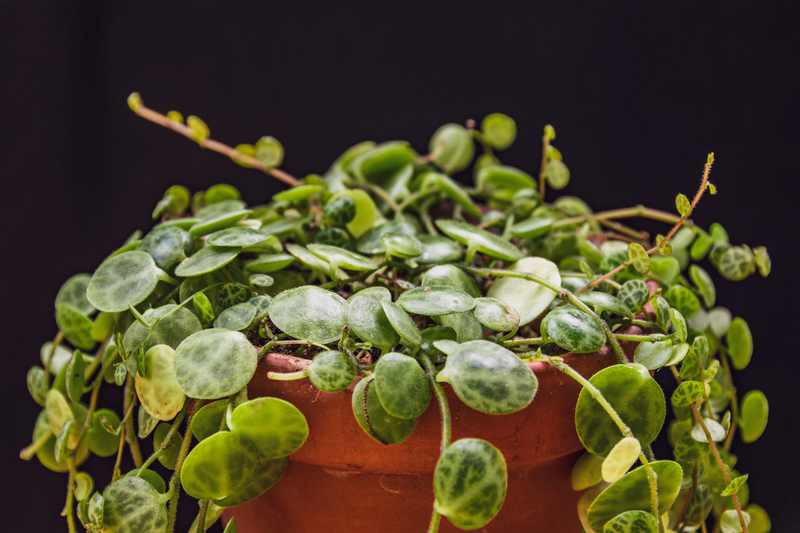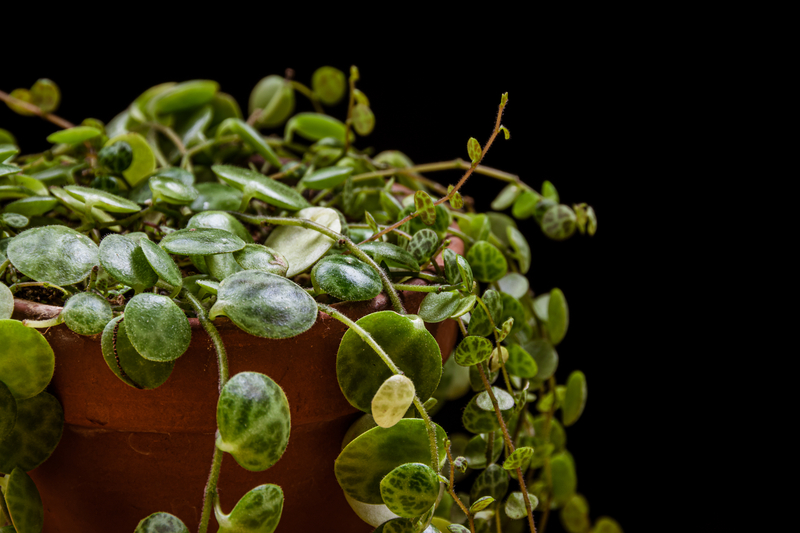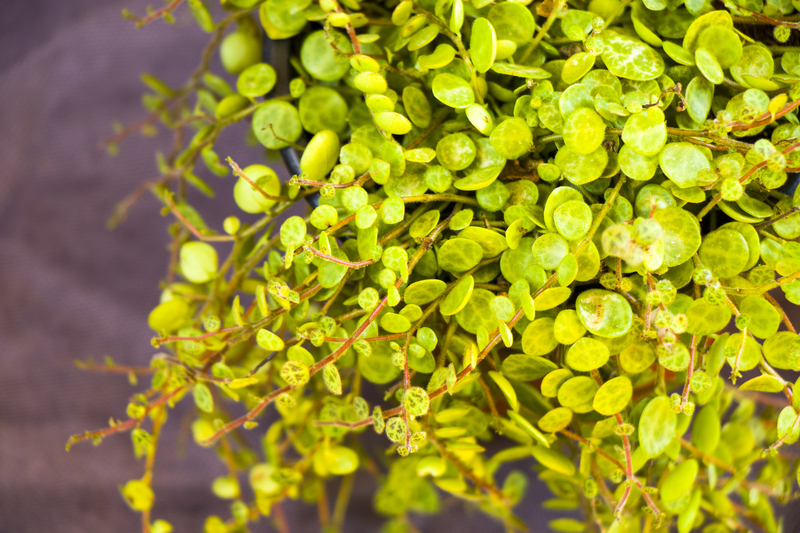The String of Turtles plant is well known for its succulent-like characteristics, along with its turtle-shell patterned small green leaves. Hailing from Brazil’s rainforests, this semi-succulent houseplant will make a great addition to any room in a home. Here’s everything you’ll need to know about taking care of the String of turtle’s plant.
Scientific Name
The Scientific name for the String of Turtles plant is Peperomia Prostrata and belongs to the Piperaceae family.
Other Names
- String of Turtles
- Turtle vine
- Chain of Turtles
- Jade Necklace
What Type of Soil Works Best for a String of Turtles Plant?
When planting a String of Turtles plant, the type of soil you should use is well-draining soil and aerated. An excellent example of this is using two parts of peat moss and one part perlite blend.
How Much Sunlight Does a String of Turtles Plant Need?
A String of Turtles plant does best with bright and indirect light. Consider placing this plant in front of an eastern or south-facing window in your home. However, be careful about leaving this plant under direct sunlight for too long. Direct light can damage the plant’s leaves, so consider putting a curtain over the window to reduce the sun’s glare.
What is the Best Temperature for a String of Turtles Plant?
The String of Turtles Plant can grow well indoors at around sixty-five to eighty-five degrees Fahrenheit. However, be careful about leaving this plant in front of an AC unit or a cold window. A cold environment does not do well for this plant.
Does a String of Turtles Plant Need Humidity?
The String of Turtles plant can survive in regular house humidity. However, if the air in your house gets dry, you should consider placing a humidifier near the plant or misting it regularly. While not necessary for this plant, you could put it in a bathroom with a shower to mimic a slightly humid environment.
How Regularly Should You Water a String of Turtle’s Plant?
When it comes to the String of Turtle’s Plant, it’s important to note that you must be highly cautious while watering this plant. The number of times you should water your plant is around once every two to three weeks. If you are not careful, you can overwater the plant and cause issues like root rot.
What Size Does it Grow to?
When it comes to the String of Turtles plant, the maximum size of the plant when fully matured is twelve inches long.
The Most Common Types of Bugs
Some of the common pests this plant deals with are mealybugs, whiteflies, and spider mites. The easiest way to get rid of these pests is to use tools like insecticidal soap and mealy oil to eliminate the bugs on the plant without killing them.
What are the Most Common Diseases for a Sea of Turtles Plant?
Some of the more common diseases this plant must deal with include damaged leaves, discolored foliage, and root rot.
Damaged Leaves occur when the plant is under bright direct sunlight for too long. Move the plant into an area with weaker direct sunlight to resolve this issue.
One of the other issues affecting this plant is discolored foliage, which occurs when you overwater your plant. The solution is to drain out the water from the pot itself. It is easier to do if you have drainage holes in the pot. It’s also important to note not to water the plant’s leaves, as that can rot the leaves.
Finally, root rot occurs when you overwater the plant and do not give it sufficient sunlight. You will need to carefully lift and inspect the plant’s root system to see any issues to solve this issue. If there are, you will need to repot the plant. Another way to solve it is to wait two weeks before watering it again so the soil can dry out.
Can You Propagate a String of Turtles Plant?
It is relatively simple to propagate a Chain of Turtles Plant. Here are the steps below.
- Cut a 3-5 inch part off the plant below a node.
- Get rid of any leaves on the bottom part of the cutting. You don’t want those leaves at the bottom of the cutting because they will be under the new soil.
- Place the new cutting into fresh soil.
- Put the plant in the fresh soil and place it in an indirect light area.
- Keep the soil moist but never soggy. Give the plant a week or two to settle in the new environment.
- Enjoy
Can You Repot a String of Turtles Plant?
The only time you should ever repot a String of Turtles plant is when it has outgrown its current one. If you use a new pot, make sure it is one size larger than the current one. When repotting, you should always use fresh new soil.
The best time to repot is during the spring and summer growing seasons, and you don’t need a new pot to do this either. You can replace the potting soil for the plant once a year, which will be enough.
Why Are My String of Turtles Plant Leaves Drooping?
If you have an issue with drooping leaves, there are two likely causes. The first is having a cold temperature in your house, while the second is the potting soil being too moist or too dry.
There are three different solutions to this issue. The first is to stop watering the soil for a week and see if that works. The second way is by watering the ground more to see if that helps. The final method uses a humidifier to increase the humidity around the plant.
What is the USDA Hardiness Zone for this Plant?
The hardiness zone that works best for a chain of turtles plant is 9-11.
Conclusion: How to Take Care of a String of Turtles Plant
The String of Turtles plant is a great indoor plant to look after and care for it. Its vine-like structure and look make for a unique startup conversation in your home. Not only that, but it is easy to propagate, which means you can give the cuttings to friends and family to add to their home!
Similar Posts:
Watermelon Peperomia Plant Care
How to Take Care of a Coffee Plant





